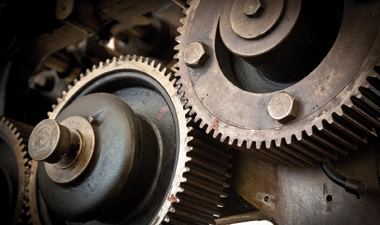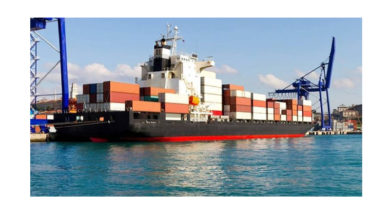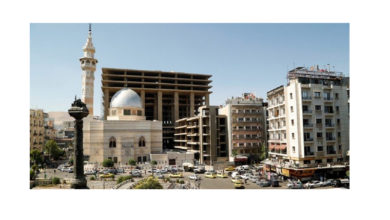To Ban Or Not To Ban?

Following the decision of the Government of India to put a ban over the import of second hand printing machinery, Naresh Khanna, Editor of Indian Printer & Publisher Magazine writes an article that discusses how the import of junk machines erodes the printing rates in India
Recently, the Government of India issued a discussion paper on the import of second hand machinery. Essentially it makes the point that there has been a decline in the domestic manufacture of machine tools. In the discussion paper the table for the machine tools sector covers the years from 2004-2005 to 2008-2009 for domestic production, combined imports of new and second machine tools, and another column for the imports of second hand machine tools. Although this data is not conclusive in the sense that the 2008-2009 ratio of 2nd hand machinery to domestic production has declined from the previous year, we should at least commend the machine tool industry for presenting data and for speaking up.
 Knowing that each industry has its own complexities and I would not hazard a comment on the other three other industries mentioned in the discussion paper apart from printing machinery – machine tools, textiles and the earth moving industry. However, I strongly believe that the somewhat fragmented printing industry – both manufacturers of printing machines and printers who purchase both imported new and second machines as well as domestically manufactured machines should discuss these issues and react to them and make their views known to the government in time. Otherwise it will again be a sorry spectacle of an industry disjointedly begging the government for some kind of ad hoc ‘relief.’
Knowing that each industry has its own complexities and I would not hazard a comment on the other three other industries mentioned in the discussion paper apart from printing machinery – machine tools, textiles and the earth moving industry. However, I strongly believe that the somewhat fragmented printing industry – both manufacturers of printing machines and printers who purchase both imported new and second machines as well as domestically manufactured machines should discuss these issues and react to them and make their views known to the government in time. Otherwise it will again be a sorry spectacle of an industry disjointedly begging the government for some kind of ad hoc ‘relief.’
The discussion paper suggests that in order to protect Indian manufacturers of capital equipment, to boost the safety and productivity of capital equipment users and to have effective compliance of duties, the restrictions on the import of second hand equipment older than five years could be seen as one of the measures. There are several other measures suggested in the discussion paper.
I have spoken to a few persons in the print industry, both capital equipment sellers and printers who import brand new and used equipment and in the main they agree that a refinement of the current rules are needed although to some extent the number of excellent machines imported since the 2007 economic crunch in Europe and America has gone up. This is partly because the industry has become competitive in its need for new technology, and secondly the automated equipment needed can no longer be imported without resorting to a bank loan. Banks frequently require certification of a machine’s origins and are keen to know that the capital investment will actually pay for itself.
Now, there is hardly any recent 6-colour plus coater UV presses available at a price that makes the risks worthwhile. And let us admit that there junk or scrap machines being imported may have declined over the past ten years but there are still a large number of these machines which is in fact undermining any effort to increase the printing rates especially in commercial printing.
 Increasingly, the customs authorities do also ask for a proper certification of the machines’ origin and age and worth — for assessing the correct customs duty. However, high quality modern technology presses and those that are available in the international market can be older than five years old – they can be as old as ten or twelve years. Increasingly, these are bought refurbished from the original manufacturer and the year of manufacture and serial number of an offset press can be established and certified. If purchased from the manufacturer they can even have some guarantee and assurance of spare parts.
Increasingly, the customs authorities do also ask for a proper certification of the machines’ origin and age and worth — for assessing the correct customs duty. However, high quality modern technology presses and those that are available in the international market can be older than five years old – they can be as old as ten or twelve years. Increasingly, these are bought refurbished from the original manufacturer and the year of manufacture and serial number of an offset press can be established and certified. If purchased from the manufacturer they can even have some guarantee and assurance of spare parts.
It doesn’t make sense anymore to import outdated printing presses (and other printing equipment) and if the government can establish a system of differentiating these, it would make sense to penalise those who import them with perhaps a much higher customs duty. In addition, the government could withdraw the duty concession against the EPCG (Export Promotion Capital Goods Scheme) export scheme if it is being used to import a second hand machine older than five years.
In any case the printing industry needs to continuously upgrade itself in terms of quality and productivity by purchasing and importing new machines. Machines such as 6-colour coater plus UV presses are still not manufactured in India and certainly no multicolour offset press in a size as big as 102 cm is manufactured in the country, let alone with modern computerised automation features and sizes such as 105 cm or 106 or 145 cm which are a competitive necessity today.
It would be another matter if our government were to actually help our manufacturers to make such machines or to enter joint-ventures to do so with subsidies or easy finance or other facilities. However, our government does not do this and the decline of HMT’s press manufacturing is a proof of this. There are too many urgent tasks for the government to undertake such as energy, water, security, education and infrastructure for it to waste time and public money in manufacturing new technology printing presses.
Another issue is that the import of presses older than ten or twelve years old is no longer viable in terms of running cost. These presses require more electricity and their spare parts are more difficult to obtain and much more expensive. For instance, the computerised control consoles of the 1990’s are simply unsupportable and require complete revamping if they break down. Even the old software for the computerised controls cannot be easily rebooted as it can be for the more recent presses of the past decade. The increased cost of space and infrastructure and skilled manpower will be the same whether an old or a new machine is installed. Thus it makes no sense to purchase a machine which cannot be productive from the first day and for a considerable period of time with minimal maintenance.
The industry needs to evaluate this discussion paper of the government and to respond in a meaningful way. On the whole, the idea of the Department of Industrial Policy and Promotion of the Ministry of Commerce and Industry is finding support from the serious importers and printers that I have thus far spoken to. An importer of quality sheetfed offset presses says, “I have not imported a press more than twelve years old in the past eighteen months and these are good condition presses with modern automation and authentic documentation and, in some cases, comes with the manufacturer’s warranty.” A leading book printer also supports the ban on machines that are very old. He holds the import of very old machines that are under-invoiced for customs purposes as being largely responsible for the low printing rates that will ultimately put more and more printers out of business. Let us hope that the All India Federation of Master Printers is able to make a meaningful representation to the government in time. In the meanwhile it is important for the printers to do their own homework and speak up.




